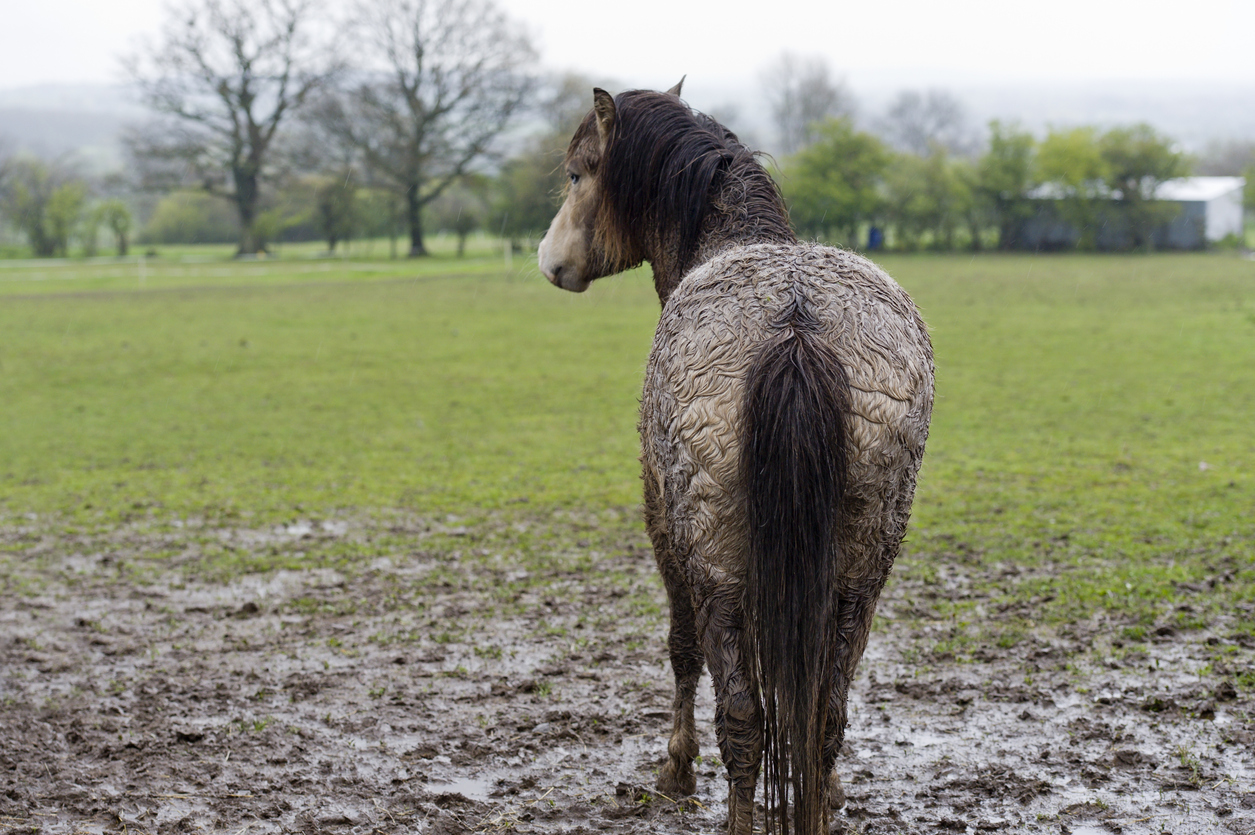High-tech diagnostics may seem like overkill when dealing with common equine skin conditions, but researchers say polymerase chain reaction (PCR) technology can be indispensable for investigating difficult cases of rainrot.

A DNA-amplification technique, PCR is commonly used in gene sequencing, forensic analysis and the diagnosis of infectious diseases.
Rainrot, a crusting skin infection caused by Dermatophilus congolensis bacteria, is often seen during rainy seasons. D. congolensis is an opportunistic organism that requires the right set of environmental conditions to become infective. When activated by wet, humid conditions, the bacteria multiply rapidly, irritating the skin of some horses. The result is crusting, tight scabs and hair loss that follows a “drip pattern” along the horse’s back, rump and flanks. It can also affect areas of the horse in contact with moist pasture such as the lower legs and muzzle.
Susceptibility to rainrot varies, with older horses and those with compromised immunity at the highest risk of more severe infection.
Click here to read more about how to protect your horse’s skin.
People often identify rainrot, which is technically known as dermatophilosis, on their own and treat their horses without a veterinarian’s guidance. “I think [rainrot] is over-diagnosed by horse owners since not all crusts are rainrot,” says Linda Frank, MS, DVM, DACVD, of the University of Tennessee. “But it is a very common disorder and I do feel that if owners think that is what the horse has, then it is worth trying their favorite treatment first. Of course, I recommend using products that are tested in horses and not necessarily recipes they find on the Internet.”
A stubborn case of rainrot, however, is cause for a veterinary visit and possible diagnostic testing. “Veterinarians are called in specifically for this condition when it is quite severe and generalized, appearing atypical with large areas of scale and hair loss, and/or not responding to treatment,” says Frank.
To diagnose rainrot, most veterinarians examine crust samples under a microscope, looking for D. congolensis. But, says Frank, this requires time and proficiency. “In chronic lesions very few organisms may be seen, so it can take a lot of time to find them or you get a false negative result,” she explains. “If you do not perform this test on a regular basis you may not be as good at identifying the organisms. It is a skill that needs to be maintained.”
PCR is a viable alternative, Frank says. “[PCR] has become a routine diagnostic test in most laboratories. It is not more expensive than submitting samples for cytology, in fact it can be less expensive than that.” She adds that the test is very sensitive, which means it is unlikely to return false negative results.
In a study of samples collected from 14 horses with suspected rainrot and 12 horses with other crusting skin conditions, cytology identified rainrot in nine (64.3 percent) of the suspected cases, while PCR found the organism in 11 (78.6 percent.) Neither cytology nor PCR identified the organism in crusts taken from horses suspected of having different skin conditions.
Based on the results of this test, Frank says she sees a role for PCR in the diagnosis of rainrot or differentiating it from other conditions, “I feel that the place for this test is when the lesions are severe enough that the owner wants the horse examined by a veterinarian,” she says. “The veterinarian can simply collect some crusts and submit them to the lab. If the horse’s lesions are severe, then the next step would be to biopsy the lesions. There are other causes of crusting than just dermatophilus, and this would be a diagnostic step to start pointing us in a different direction, prior to a taking a skin biopsy.”
Reference: “RT-qPCR for the diagnosis of dermatophilosis in horses,” Veterinary Dermatology, October 2016
This article first appeared in EQUUS issue #471
Don’t miss out! With the free weekly EQUUS newsletter, you’ll get the latest horse health information delivered right to your in basket! If you’re not already receiving the EQUUS newsletter, click here to sign up. It’s *free*!








